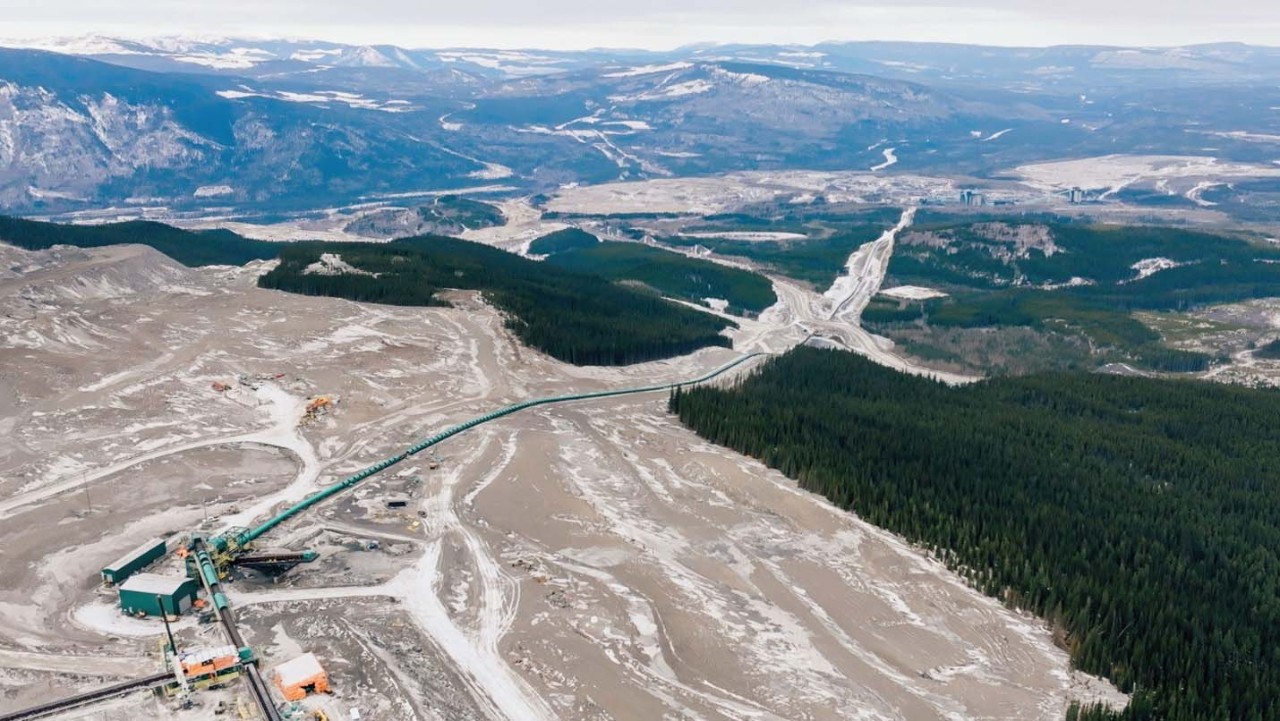 A BC Hydro feasibility study helped Conuma Resources implement a 5 km overland conveyor at Quintette Mine that creates energy regeneratively.
A BC Hydro feasibility study helped Conuma Resources implement a 5 km overland conveyor at Quintette Mine that creates energy regeneratively.
Producing coal responsibly
Although alternative steelmaking technologies are emerging, steelmaking coal remains the most effective and commercially viable carbon input for producing steel at scale. While fossil-free steel is technically achievable, significant challenges related to cost, infrastructure, and scalability mean it will likely be decades before there's a meaningful reduction in the use of steelmaking coal in steel production. In the meantime, a B.C. mining company producing steelmaking coal has integrated an interesting electric regeneration conveyor belt solution into the process.
Conuma Resources is the second largest steelmaking coal producer in Canada. Founded in mid-2016, it's an integral part of the global steel supply chain, producing high quality steelmaking coal for leading steelmakers. Conuma places enormous importance on sustainability, integrating a variety of economic, environmental, and social principles into its operations. One of these principles is to reduce the carbon intensity of its mining operations by 15% by 2030.
We sat down with Hugh Kendrick, Conuma's Chief Sustainability Officer, to find out more. "Conuma currently operates two mines, Willow Creek and Quintette," says Hugh. "Quintette had been in care and maintenance for 23 years before we acquired it in early 2023. We restarted operations after 18 months of work to bring it back into production. It's a large mine, and the nearby town, Tumbler Ridge, the railway line to Prince George and the port in Prince Rupert were all built initially principally to service Quintette."
Trucks or transfer?
Part of the challenge of making Quintette operational again was solving the problem of how to get the coal from the mine to the processing plant. "The mining pit is over 5 kilometres away from our plant. It's also elevated 400 metres above the plant," says Hugh. "So, on average, that's an 8-degree slope to bring the coal down, and it meant we only had two options: haul trucks or a transfer (conveyor belt) system."
"It's quite a descent for the five or six 200-ton haul trucks we would need. Copper Mountain's trolley assist trucks work great, but they go uphill. Here at Quinette, the steep drop down from the mine requires several switchbacks and runaway lanes as an extra safety measure. There's also fuel costs – haul trucks can burn over 300 litres of fuel an hour when fully loaded," says Hugh. "Overall, haul trucks typically involve lower upfront capital expenditure but come with high operating costs over time. In contrast, an overland conveyor requires a much higher initial capital investment but delivers much lower ongoing operating costs. BC Hydro funded a conveyor feasibility study, which provided valuable insights, particularly regarding energy. We also designed the conveyor to regeneratively create electricity, which is a great additional benefit."
The construction of the conveyor system took place from the second half of 2023 to the end of 2024, including the winter months. "It was a challenging project as we had to construct both tunnels and ravine crossings for the conveyor. Winter conditions added to the complexity, with cold temperatures making concrete curing difficult and high winds creating additional challenges for construction."
More electricity, fewer greenhouse gases
The finished conveyor system is 5.2 km long and descends approximately 400 m. "The belt is 54 inches wide, so we're carrying a lot of product, which moves the conveyor by itself due to gravity," says Hugh. "It takes some initial power to get the belt moving, but once running, the weight of the steelmaking coal moving downhill begins to generate close to 500 kilowatts of electricity. We use variable frequency drives (VFDs) on the conveyor to capture this generated energy and utilize it onsite."
The conveyor system also reduces the use of haul trucks, saving around 10,000 tonnes of greenhouse gases annually by eliminating the need to burn fuel.
Could a similar conveyor system also be suitable for Willow Creek, Conuma's other mine? "It depends on factors like permitting, the projected mine life, and the overall economics, but it's certainly something that should be considered," says Hugh.
Do you need help evaluating a potential project?
If you're wondering about how an energy project might impact your facility, talk to us about a funded feasibility study. Contact your Key Account Manager or Regional Energy Manager, or call 604 522 4713 in the Lower Mainland or 1 866 522 4713 elsewhere in B.C.
